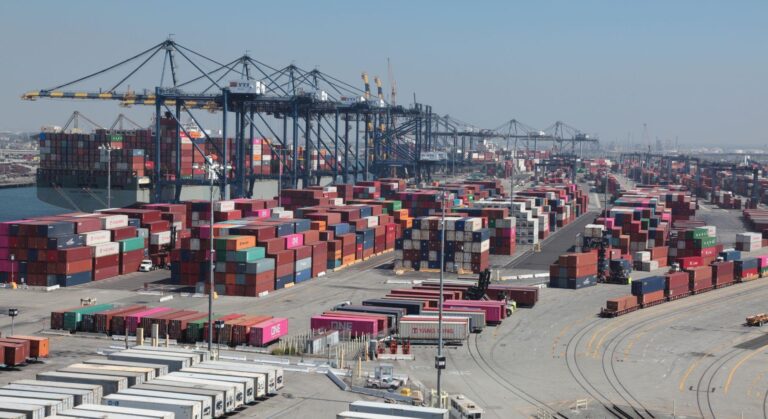Los Angeles at a Crossroads: Adapting to the Challenges of Rising Trade Tariffs
Los Angeles’ Trade Landscape Amid Escalating Tariffs
As a cornerstone of international commerce, Los Angeles finds itself confronting significant challenges due to the surge in tariffs introduced during the Trump administration. These increased duties have disrupted the city’s dynamic trade environment, particularly impacting its vital ports and associated industries. The Port of Los Angeles, a key entry point for goods into the United States, now faces mounting pressure to adjust swiftly to evolving trade policies and renegotiated international agreements.
Primary concerns include:
- Interruptions in agile logistics and freight forwarding systems
- Potential migration of manufacturing and distribution hubs to other ports
- Financial strain on local enterprises dependent on imported materials
| Area of Impact | Immediate Outcome | Long-Term Projection |
|---|---|---|
| Shipping Throughput | Decline estimated between 8-12% | Possible stabilization or continued downturn |
| Employment in Logistics | Reduction in jobs related to freight handling | Potential evolution and diversification of roles |
| Commodity Pricing | Immediate inflationary pressures | Market correction over time |
How Tariff Policies Have Reshaped Local Businesses and Supply Networks
The tariff increases enacted during the Trump era have left a profound mark on Los Angeles’ complex network of local businesses and supply chains. Enterprises that once relied on stable trade conditions now grapple with rising expenses, compelling many to rethink their sourcing and pricing strategies. Small and medium-sized businesses, in particular, have encountered difficulties managing sudden cost surges in raw materials and imported products. This volatility has triggered delays and inventory shortages, affecting everything from retail shelves to manufacturing lines.
Industries heavily dependent on imports,such as consumer electronics and apparel,have been forced to recalibrate their supply chains both domestically and internationally. Notable effects include:
- Escalated operational expenses: Many firms have absorbed tariff costs, squeezing profit margins.
- Supplier realignment: Businesses are exploring alternative sourcing regions less impacted by tariffs.
- Increased logistical bottlenecks: Port congestion and customs processing delays have intensified due to more complex import procedures.
| Industry | Tariff Effect | Business Adaptation |
|---|---|---|
| Consumer Electronics | Approximate 15% cost increase | Broadened supplier base |
| Apparel and Textiles | 10% additional import duties | Investment in domestic production |
| Automotive Components | Up to 25% tariffs | Stockpiling inventory to hedge costs |
Strategic Responses for Los Angeles Exporters and Importers
Exporters and importers in Los Angeles are navigating a complex and evolving trade environment shaped by tariff policies from the previous administration. To maintain profitability and operational efficiency, businesses are adopting multifaceted strategies. These include expanding their supplier networks to reduce dependency on tariff-heavy regions, utilizing advanced technologies for market intelligence, and renegotiating contracts to accommodate new cost realities.
Moreover, enhancing compliance protocols and streamlining customs procedures have become essential to avoid costly delays. Collaboration with trade specialists and industry groups is increasingly significant to stay abreast of regulatory updates and identify potential tariff exemptions.The following table outlines practical approaches for businesses to effectively manage these challenges:
| Approach | Details | Anticipated Advantage |
|---|---|---|
| Supplier Diversification | Source products from countries with lower tariff exposure | Mitigates risk of supply chain disruptions and tariff costs |
| Technology Investment | Deploy AI and analytics tools to predict market trends | Enhances decision-making and cost control |
| Customs Education | Train staff on updated trade regulations and tariff classifications | Reduces border delays and penalties |
| Policy Engagement | Work with trade associations to advocate for favorable policies | Potential for tariff relief and improved regulatory environment |
Policy Initiatives to Strengthen Los Angeles’ Global Trade Standing
To counteract the negative repercussions of tariff increases and preserve Los Angeles’ status as a premier international trade hub, targeted policy interventions are essential. Prioritizing investments in port infrastructure—such as automation, expanded capacity, and advanced logistics technology—can alleviate congestion and accelerate cargo movement. Additionally, workforce development programs focused on emerging sectors will help protect jobs and promote economic diversification beyond traditional import-export activities.
Recommended policy actions include:
- Fostering trade relationships with emerging economies to diversify market access
- Offering tax incentives to encourage innovation in supply chain management
- Enhancing customs processes through digital change and automation
- Implementing robust environmental standards to improve sustainability and global competitiveness
| Policy Area | Projected Outcome |
|---|---|
| Port Infrastructure Upgrades | Reduced bottlenecks and faster delivery times |
| Market Diversification | Expanded trade opportunities and reduced tariff exposure |
| Supply Chain Innovation Incentives | Increased resilience and efficiency |
| Sustainability Initiatives | Enhanced environmental reputation and compliance |
Final Thoughts
As Los Angeles confronts the ongoing effects of tariff policies from the Trump administration, its role as a critical node in global trade faces increasing uncertainty. From port authorities to local enterprises,stakeholders are preparing for disruptions that could reshape supply chains and economic patterns. Vigilant monitoring of these developments will be vital to understanding their broader impact on both the regional and international economic landscape.




